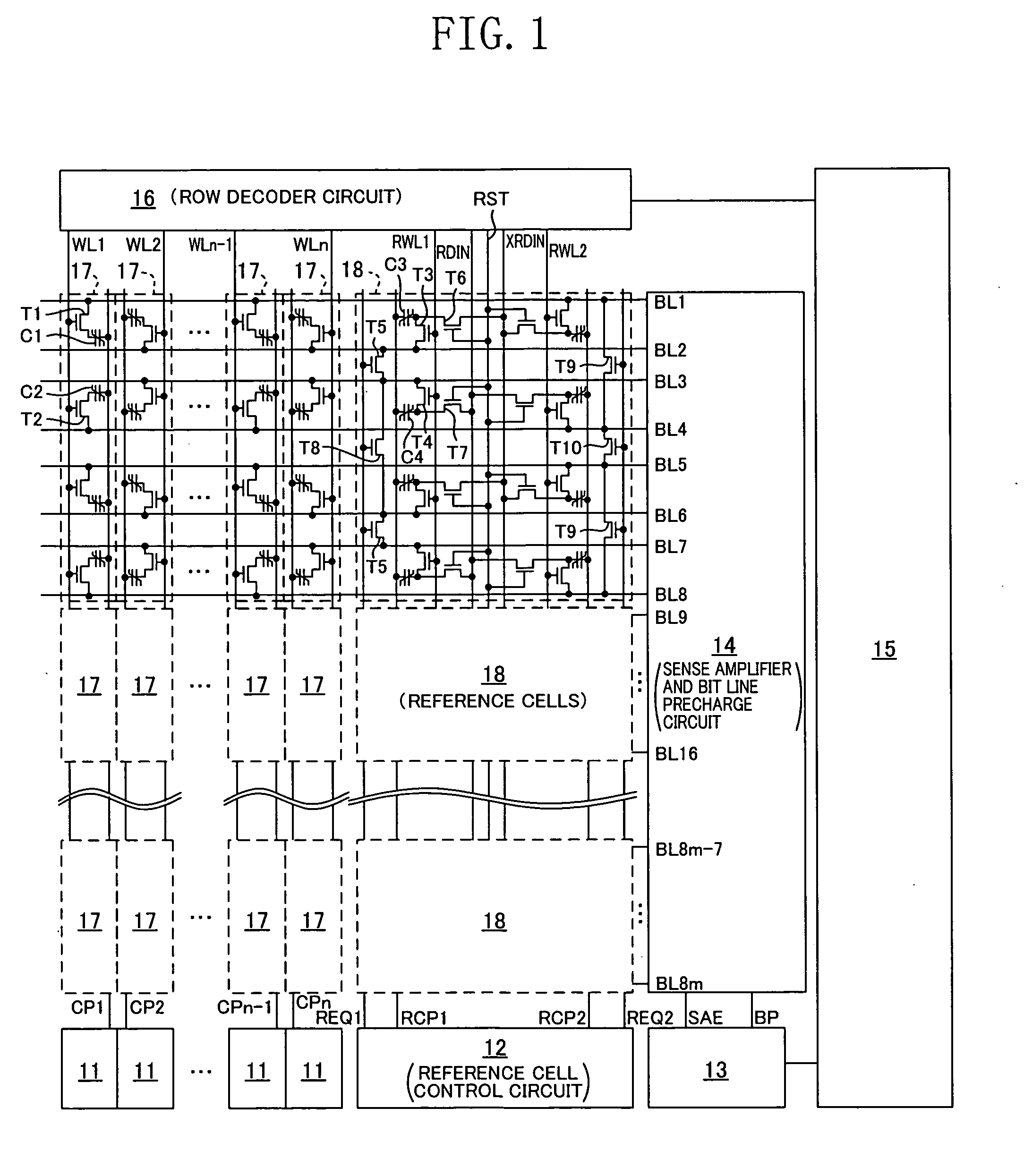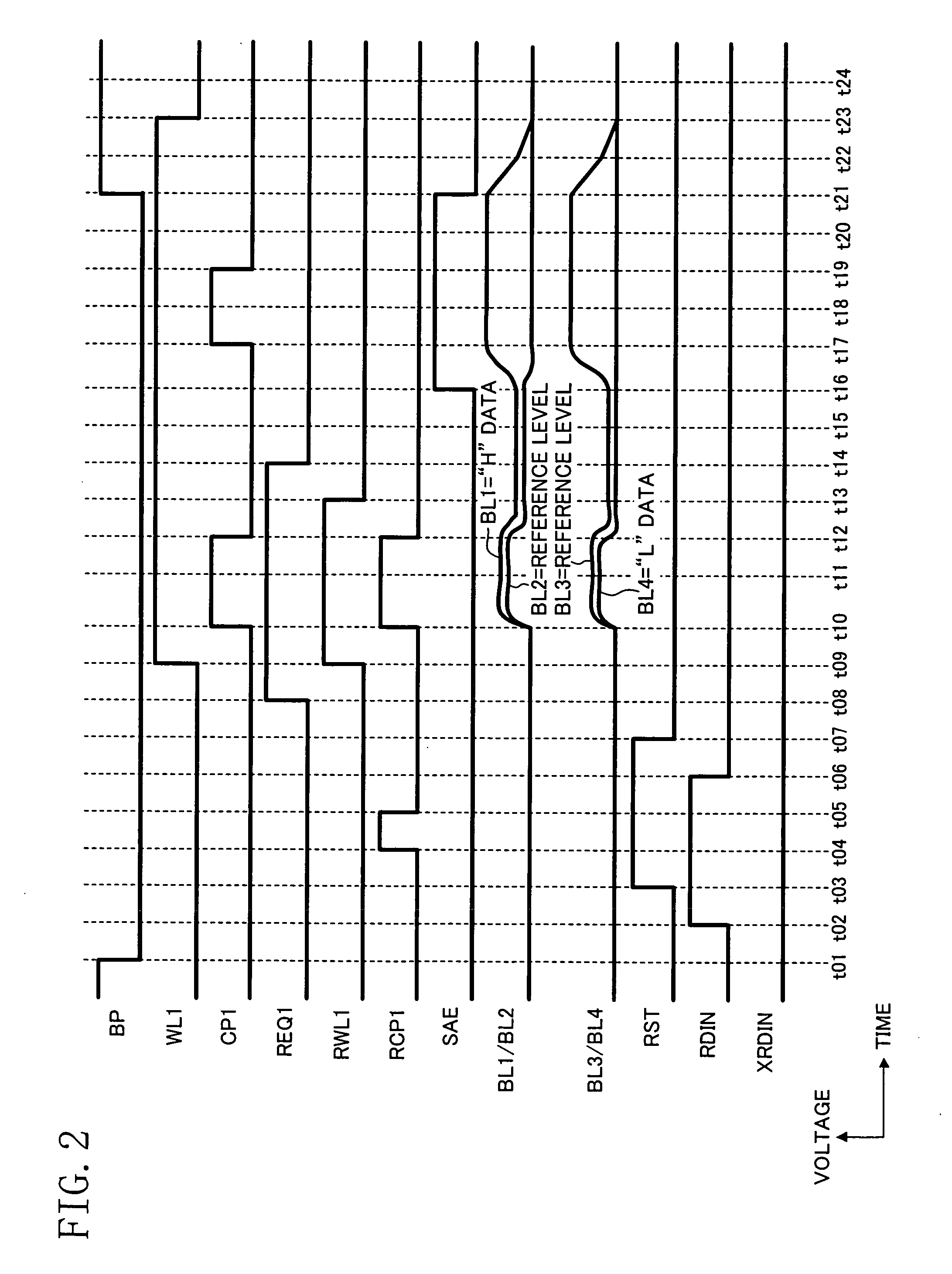Ferroelectric semiconductor memory device
a technology of ferroelectric semiconductors and memory devices, applied in information storage, static storage, digital storage, etc., can solve the problem of different reference levels in the first data read operation of reading out data from normal cells, and achieve the effect of reducing the number of read operations
- Summary
- Abstract
- Description
- Claims
- Application Information
AI Technical Summary
Benefits of technology
Problems solved by technology
Method used
Image
Examples
first embodiment
[0045] A ferroelectric semiconductor memory device according to a first embodiment of the present invention will now be described.
[0046]FIG. 1 shows a configuration of a memory array according to the first embodiment of the present invention. FIG. 2 is a timing diagram showing an operation according to the first embodiment of the present invention. FIGS. 3A to 3D show a trace on a hysteresis loop when reading out data from normal cells (ferroelectric memory elements) and reference cells in the reset state and in the relaxed state, and the relationship between the “H” level, the “L” level and the reference level in the reset state and in the relaxed state. FIG. 5 shows a trace on a hysteresis loop when resetting normal cells and reference cells in the relaxed state according to the first and second embodiments of the present invention. FIG. 6 shows a trace on a hysteresis loop when resetting reference cells according to the present embodiment. FIGS. 7A and 7B each schematically show...
second embodiment
[0064] A ferroelectric semiconductor memory device according to a second embodiment of the present invention will now be described with reference to the drawings.
[0065]FIG. 4 is a timing diagram showing an operation according to the second embodiment of the present invention, and FIG. 6 shows a trace on a hysteresis loop when resetting reference cells according to the present embodiment.
[0066] The ferroelectric semiconductor memory device of the present embodiment will be described with reference to FIGS. 4 and 6. The present embodiment differs from the first embodiment in that the first reference cell plate line RCP1 is at “H” in the period t17-t18 in FIG. 4. The operation until time t14 in FIG. 4 is similar to that of the first embodiment, and will not be further described below.
[0067] Part of the operation of the present embodiment that differs from the first embodiment will now be described below. The device brings the “H” data reset data RDIN to “H” at time t15 in FIG. 4, th...
PUM
 Login to View More
Login to View More Abstract
Description
Claims
Application Information
 Login to View More
Login to View More - R&D
- Intellectual Property
- Life Sciences
- Materials
- Tech Scout
- Unparalleled Data Quality
- Higher Quality Content
- 60% Fewer Hallucinations
Browse by: Latest US Patents, China's latest patents, Technical Efficacy Thesaurus, Application Domain, Technology Topic, Popular Technical Reports.
© 2025 PatSnap. All rights reserved.Legal|Privacy policy|Modern Slavery Act Transparency Statement|Sitemap|About US| Contact US: help@patsnap.com



